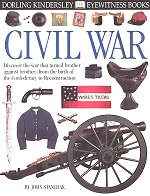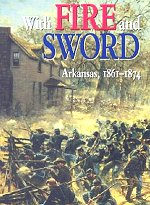 Eye Witness Civil War Eyewitness Civil War includes everything from the issues that divided the country, to the battles that shaped the conflict, to the birth of the reunited states. Rich, full-color photographs of rare documents, powerful weapons, and priceless artifacts plus stunning images of legendary commanders, unsung heroes, and memorable heroines More Young Reader Titles. |
Civil War Map of Battles
|
|
|
|


 72 Piece Civil War Army Men Play Set 52mm Union and Confederate Figures, Bridge, Horses, Canon
|
Civil War State Battle Map American Civil War Exhibits American Civil War Timeline Women Soldiers Civil War Summary Civil War Submarines Ships and Naval Battles Confederate Store |
 Civil War Model 1851 Naval Pistol Engraved Silver Tone / Gold Tone Finish and Wooden Grips - Replica of Revolver Used by Both USA / Union and CSA / Confederate Forces |
Kindle Available From Manassas to Appomattox: General James Longstreet According to some, he was partially to blame for the Confederate defeat at Gettysburg; according to others, if Lee had followed Longstreet's advice, they would have won that battle. He has been called stubborn and vain; and he has been lauded as one of the greatest tacticians of the Civil War |
Kindle Available Robert E. Lee This book not only offers concise detail but also gives terrific insight into the state of the Union and Confederacy during Lee's life. Lee was truly a one of kind gentleman and American, and had Virginia not been in the south or neutral, he ultimately would have led the Union forces. |
Kindle Available Worthy Opponents: William T. Sherman and Joseph E. Johnston: Antagonists in War-Friends in Peace If Confederate President Jefferson Davis had left Gen. Joseph E. Johnston, one of its most effective generals, in command of Atlanta's defenses, the city might have been preserved. Edward Longacre offers a new perspective on Sherman's and Johnston's military histories, including their clashes at Vicksburg, Kennesaw Mountain, and Bentonville |
 Red River Campaign: Politics and Cotton in the Civil War Fought on the Red River throughout Central and Northwestern Louisiana, this campaign is a study in how partisan politics, economic need and personal profit determined military policy and operations in Louisiana and Arkansas during the spring of 1864. |
 Rugged and Sublime: The Civil War in Arkansas Arkansas was also the scene of bloody struggles, not only battles but smaller clashes involving guerillas as well. According to editor Mark Christ, the state of Arkansas saw "at least 771 Civil War military actions", a number which ranks the state fifth in total number of battles, actions, and skirmishes |
 With Fire and Sword: Arkansas, 1861-1874 (Histories of Arkansas) Scholarly examination of just how the events of the Civil War and the Reconstruction so heavily devastated the state of Arkansas, its population and its economy |
 A Stranger And a Sojourner: Peter Caulder, Free Black Frontiersman in Antebellum Arkansas An illiterate free black man, defied all generalizations about race as he served with distinction as a marksman in the U.S. Army during the War of 1812, repeatedly crossed the color line, and became an Arkansas yeoman farmer, thriving and respected by white neighbors until he fell victim of new discriminatory legislation on the eve of the Civil War |
Kindle Available Civil War Arkansas, 1863 The Battle for a State The Arkansas River Valley is one of the most fertile regions in the South. During the Civil War, the river also served as a vital artery for moving troops and supplies. In 1863 the battle to wrest control of the valley was, in effect, a battle for the state itself. |
 Things Grew Beautifully Worse : The Wartime Experiences of Captain John O'Brien, 30th Arkansas Infantry, C.S.A. The story of an Irish immigrant to Arkansas who became a soldier, officer and prisoner during the Civil War. Captured during the Battle of Murfreesboro, Captain John O'Brien was ultimately transferred to Johnson's Island military prison in Ohio. While imprisoned, O'Brien kept a diary in which he recounts his military service and capture in addition to his daily life in the prison. Through it all, Captain O'Brien is able to maintain his sense of humanity--and even a bit of his native Irish wit and humor. |
Kindle Available Six Years of Hell Harpers Ferry During the Civil War While Harpers Ferry was an important location during the Civil War, in most Civil War books it's a sideshow of something larger. John Brown's raid, Lee's invasions of 1862 & 1863 as well as Early's 1864 raid are all covered in depth |
 Civil War Arkansas Beyond Battles and Leaders Written and first published in 1866 soon after the author's discharge from the Union army, A.F. Sperry's History of the 33rd Iowa Infantry is one of the classic regimental histories of the American Civil War. It is a detailed account of the regiment's movements and actions |
Kindle Available John Hunt Morgan and His Raiders The "Thunderbolt of the Confederacy" John Hunt Morgan from Tompkinsville, Kentucky to Greeneville, Tennessee. |
 A Grand Army of Black Men: Letters from African-American Soldiers in the Union Army 1861-1865 Almost 200,000 African-American soldiers fought for the Union in the Civil War. Although most were illiterate ex-slaves, several thousand were well educated, free black men from the northern states |
 Where the South Lost the War: An Analysis of the Fort Henry-Fort Donelson Campaign The war probably could have been over in 1862 had Lieutenant Phelps destroyed the bridge at Florence. Not doing so provided a retreat for A. S. Johnston to move his men to Corinth and then to Shiloh |
 Red River Campaign of 1864 and the Loss by the Confederacy of the Civil War The Union Army's Red River Campaign began on March 12, 1864, with a two-pronged attack aimed at gaining control of Shreveport, Louisiana. The Union's main effort came up from Berwick's Bay via the Red River, while a supporting force moved south from Little Rock, Arkansas. It lasted until May 22, 1864, when, after suffering significant casualties, the Union army retreated back to Simmesport, Louisiana. |
Kindle Available Wilson's Creek, Pea Ridge, and Prairie Grove: A Battlefield Guide, with a Section on Wire Road three of the most important battles fought west of the Mississippi River during the Civil War. They influenced the course of the first half of the war in that region by shaping Union military efforts while significantly contributing to Confederate defeat. A history of each battle and an overview of the larger strategy and tactics of the military action in which these battles figured. |
Kindle Available Wilson's Creek, Pea Ridge, and Prairie Grove: A Battlefield Guide, with a Section on Wire Road three of the most important battles fought west of the Mississippi River during the Civil War. They influenced the course of the first half of the war in that region by shaping Union military efforts while significantly contributing to Confederate defeat. A history of each battle and an overview of the larger strategy and tactics of the military action in which these battles figured. |
 To the North Anna River: Grant and Lee, May 13-25, 1864 Spectacular narrative of the initial campaign between Ulysses S. Grant and Robert E. Lee in 1864. May 13 through 25, was critical in the clash between the Army of the Potomac and the Army of Northern Virginia. |
 Grant's Secret Service: The Intelligence War from Belmont to Appomattox The first scholarly examination of the use of military intelligence under Ulysses S. Grant's command during the Civil War. Feis makes the new and provocative argument that Grant's use of the Army of the Potomac's Bureau of Military Information played a significant role in Lee's defeat |
Kindle Available Men of Fire: Grant, Forrest, and the Campaign That Decided the Civil War In the winter of 1862, on the border between Kentucky and Tennessee, two extraordinary military leaders faced each other in an epic clash that would transform them both and change the course of American history forever |
|
Bonnie Blue Flag Bonnie Blue The Confederate government did not adopt this flag but the people did and the lone star flags were adopted in some form in five of the southern States that adopted new flags in 1861. |
Southern Cross Flag Used as a navy jack at sea from 1863 onward. This flag has become the generally recognized symbol of the South. |
Second Confederate Flag  On May 1st,1863, a second design was adopted, placing the Battle Flag (also known as the "Southern Cross") as the canton on a white field. This flag was easily mistaken for a white flag of surrender especially when the air was calm and the flag hung limply. More on Confederate Flags |
Sources:
U.S. National Park Service
U.S. Library of Congress.
